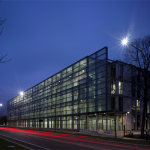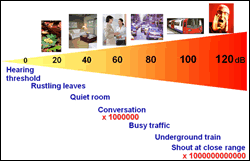Steve Lee and I attended a fascinating seminar day hosted by Toby Churchill Ltd – a company specialising in AAC (Augmentative and Alternative Communication). There were a series of very interesting talks and lots of networking moments. Meanwhile all the staff were amazingly modest about the fact that during the day the BBC were interviewing some of them, as a result of the company winning the 2011 Queen’s Award For Enterprise, International Trade.
David Collison as Chairman, accompanied his invitation to the day with a series of very apposite questions in relation to our project.
Q: Can these projects (AEGIS & REALISE) use the open source / free software model to avoid duplication and encourage innovation by creating new open standards which will be adopted by industry and seen as valuable by fund holders?
Q: Is it a case of formal standards or would frameworks or guidelines be more useful? Who would create and maintain formal standards?
One common problem with the use of AAC and AT technology is fitting the entire bundle into a single cohesive system for a user with complex needs, not just so that it all works but so that carers and professionals can quickly identify and contact the relevant support teams for each component in that system. It would seem intuitive that a set of standardised, reusable, components which can be selected and arranged to suit the needs of individuals would assist in such problems.
Q: Can industry and academic bodies co-operate in ways to ensure such a standard toolkit can exist at the design stage and would open standards aid or hinder such development?
Inclusive design is not about manufacturers conjuring a model user out of thin air and designing a single product to meet all the needs of that model as has been done in the past Manufacturers already aim, internally, to produce a range of products based on a common core and support the remodelling of those products to further widen the net. To reach the widest market of social need on the basis of inclusive design, a common core could be shared between manufacturers to create products which are versatile and adaptable, rapidly designed and mass market.
Q: Can this work in the AAC market? If not, why not?
Q: What might be the role for standards in defining the common core?
Whilst the open source development model clearly can and does work for software, questions remain about how such standards can be utilised for hardware without making costs prohibitive, especially in small scale, niche, markets like AAC/AT where new technology becomes a medical device with the associated regulatory burdens. There is, therefore, a risk that mainstream hardware supporting the standards-compliant software would make custom hardware even harder to produce.
Q: How are the problems of small scale / high cost production going to impact on the inclusive design of AAC devices? Which parts of AAC can go mainstream and how do manufacturers handle the transition?
 With these thoughts in mind we had a series of talks that covered topics from the incubation of new technology in the AT Industry to user perceptions on communication aid design, inclusive design and designing AAC products in the commercial world. There was also a talk about developing language and communication strategies through AT which highlighted the issues around largely human issues rather than open innovation ones.
With these thoughts in mind we had a series of talks that covered topics from the incubation of new technology in the AT Industry to user perceptions on communication aid design, inclusive design and designing AAC products in the commercial world. There was also a talk about developing language and communication strategies through AT which highlighted the issues around largely human issues rather than open innovation ones.
All the talks will be available online from Toby Churchill but what really came out during the discussions was how important the user is within the design process and the need for communication at all levels. Graham Pullin has a book out on the subject of ‘Design meets Disability‘ and discussed the concept of 6 speaking chairs of design in relation to speech and tone and the follow on with Speech Hedge.
One interesting example of crowd sourcing and sub-cultures was discussed – Kuler – people making a process open – openness in terms of inclusive design – kuler.adobe.com
Would this way of working be possible with AAC and Assistive Technology? Being Creative and sharing the results…
What is design? – “it is the combination of artifice with technology the intangible with the unintelligible.” according to David Bisset, Principal Design Consultant at Toby Churchill Ltd – he went on suggest that AAC design goals have these items in common…
- “Products must efficiently fulfil user need
- Need to be cost effective to make and maintain
- Must be reliable and appropriate
- Must provide value for money.
Commercial Goals
- Adaptable to different sets of needs.
- Cover as much of the user spectrum as is viable
- Keep life cycle costs as low as possible
- The USP should be clear and communicable
- Brand enhancing
- Clear IP ownership”
There followed an ever increasingly complex development process diagram! David then asked the question…
“Consumer products influence the AAC market – true or false?
- They do through user expectation – such as slim lightweight products, touch screen, chic,
- They make other technologies available so they can be incorporated in AAC devices
- Influence standards, app stores, social networks, etc.
Can consumer products work as AAC products?
- Sometimes
- If they fulfil a need
- In conjunction.
It is about ‘Structural Deepening’
- Specialist domain knowledge drives technical innovation to improve products with a market niche
- If the niche is sufficiently specialised the products will take on a unique character for that market
- That leads to increasing technical complexity as new layers of function are added
In niches all these levels and layers add to the specialist domain knowledge
This is a self organising evolution – The niche becomes deeper -You end up with single companies controlling whole markets. Designing AAC products require deep domain knowledge.
Designing for AAC users – The designer can’t always assume the customer role. It may not be ethical to run user trials this makes it very hard to establins the right design choices – Appreciating the sensory motor constraints of the AAC iuser is difficult.
Comprehending how a user interface looks can be hard – Does open help?
Open development, open software, open design, open hardware, open standards.
- Open development works when the people that benefit from the software are the people that write it.
- This is not applicable in all domains
- The coincidence of skills is rare.
- It works well for defined generic technology like Bluetooth
- Not good for defined technologies
Standards and Approvals. – do we want them for AAC?
How do we make better products?
- Using better design processes
- Engaging with users
- Meeting new needs”












